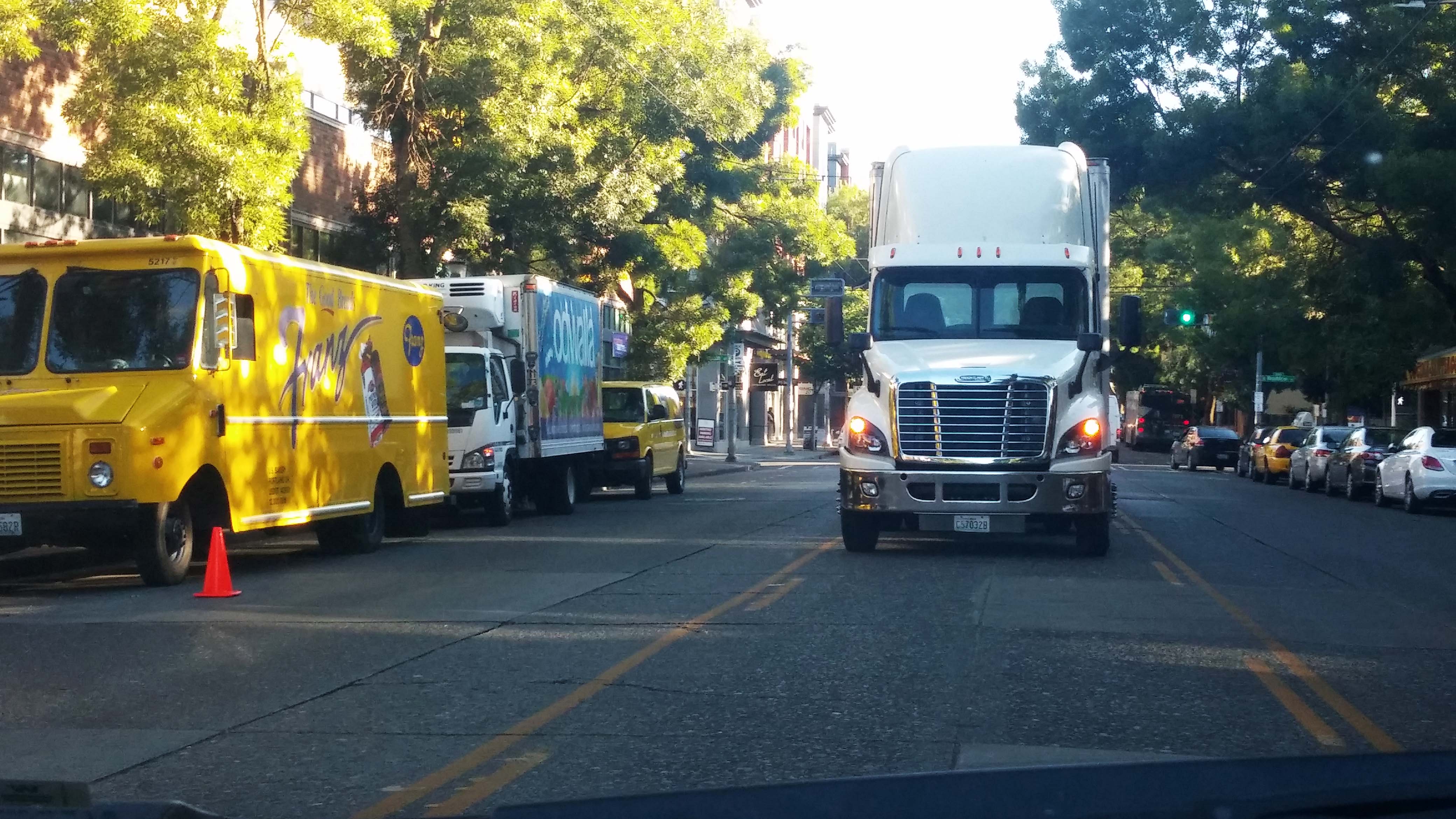Washington state’s robust food distribution industry must transport goods from farms to processing plants, to warehouses, and finally to stores for consumption. Although this freight system helps sustain economic growth in the state, it also has significant impacts on traffic congestion and carbon emissions.
Under the SHRP2 Local Freight Data program for the Washington State Department of Transportation (WSDOT), researchers looked at urban, suburban, and rural locations, as well as grocery stores, food distributors, and food processors to shed light on the state’s food distribution system and its transportation, logistics, and fleet characteristics, as well as the industry’s experience and expectations with natural gas vehicles and natural gas policies and programs.
Interviews and truck counts revealed that large grocery store firms use larger trucks, travel longer distances, and travel more highway miles than local street miles. Large food distributors travel a larger variety of routes, with a more diverse truck fleet. In contrast, smaller food distributors use smaller trucks, travel shorter routes, and travel mostly in urban areas, with less highway driving.
Smaller firms with smaller trucks deliver goods through the front door of the store and use the customer parking lot. Larger firms, with larger trucks, unload goods through the loading dock in the back of the store. Smaller, local firms also make more frequent deliveries, delivering goods every weekday, whereas large firms make deliveries three to four times per week.
For urban stores, there is often a lack of a dedicated store parking lot. These urban stores often have covered garages, with loading docks inside the garage. Many drivers, particularly from smaller firms and those with smaller trucks, still prefer to use the front door for deliveries. However, they have to park their trucks in a parallel spot, left turn lane, or the travel lane. Deliveries at urban stores occur earlier in the morning than at suburban and rural stores in order to avoid traffic on urban streets.
The researchers found that three of the five large food distributors had implemented a natural gas pilot program, while none of the smaller food distributors (fleets of fewer than 40 trucks) had implemented or considered natural gas truck engines. The companies that had begun a natural gas pilot program reported that the trucks lacked power and range, lack of a refueling infrastructure posed problems, and the trucks were costly.
Small food distribution firms place importance on reducing fuel use and emissions. However, they do not have the resources to procure natural gas technology. Unfortunately, the government grant and tax credit process is cumbersome to navigate for smaller enterprises. These issues, together with the lack of refueling stations, means that alternative fuel vehicles are not currently a viable option for smaller firms. However, these smaller firms operate trucks and service routes that would be most conducive to reducing fuel use and emissions if they switched to natural gas trucks, without any detriment to performance. Therefore, policy makers should take care in devising new alternative fuel incentives so that they reach smaller firms that have been left out of the alternative fuel marketplace.
Authors:
Anne V. Goodchild
Luka Ukrainczyk
UW Department of Civil and Environmental Engineering
Sponsor: WSDOT
WSDOT Technical Monitor: Barbara Ivanov
WSDOT Project Manager: Doug Brodin

